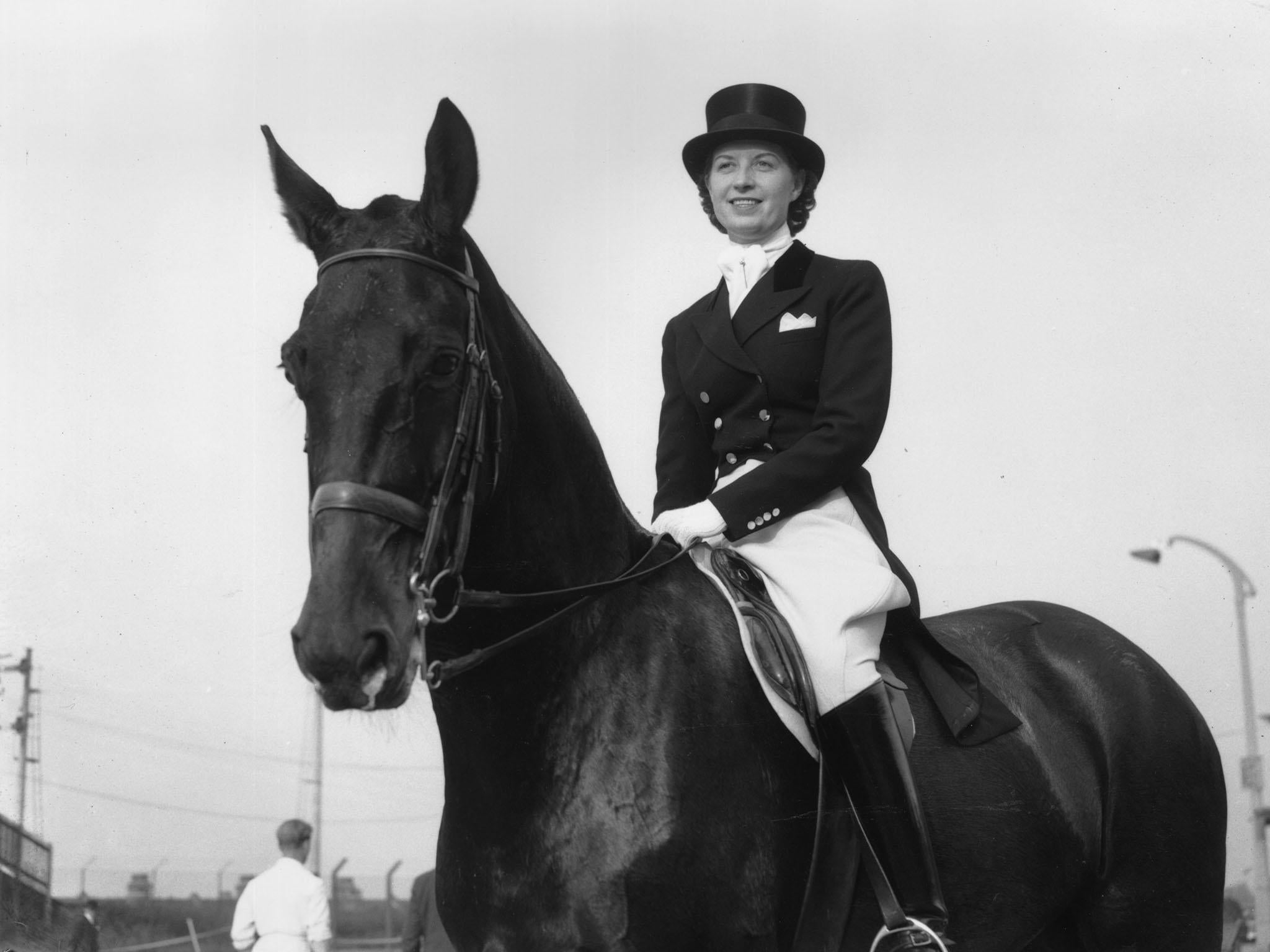Great Olympic Friendships: Lis Hartel, Henri Saint Cyr and a moment of devotion that moved the world
Thanks to Saint Cyr’s gesture of sportsmanship, friendship and chivalry, a story went round the world that would inspire generations of riders and ultimately improve the lives of thousands of disabled people

Helsinki, 1952: the individual dressage event had been competed with fierce intensity. At the end, just 20 points separated the first and second placed riders, a narrow margin by Olympic standards. But this was the Olympics. It wasn’t the intensity of the competition that made 1952 extraordinary. It was the medal ceremony.
Lis Hartel, the Danish silver medal winner, needed help dismounting from her horse Jubilee. To her aid came the gold medal winner, Major Henri Saint Cyr of Sweden. The major helped her down from her horse, and carried her to the podium. As the crowd watched Hartel being carried to the podium, to stand there defiantly managing to stay upright on almost completely weakened legs, there was hardly a dry eye in the stadium. (Although Saint Cyr, and his fellow officer, bronze-winning French soldier André Jousseaume, did maintain their military bearing, both men saluting smartly as Hartel dabbed her eyes with a tissue.)
Thanks to Saint Cyr’s gesture of sportsmanship, friendship and chivalry, a story went round the world that would inspire generations of riders and ultimately improve the lives of thousands of disabled people. Because in carrying Hartel to the podium, Saint Cyr drew attention to one of the most extraordinary feats of courage in Olympic history. Every time she rode, Hartel had to be helped on to and off her horse. Just eight years before Helsinki, in 1944, when she was 23, she had been almost completely paralysed by polio while pregnant with her second child.
The doctors told her that if she was lucky, she might, perhaps, be able to walk again – albeit with the aid of crutches. Resuming a love affair with riding which had already seen her win two Danish national dressage championships was, they suggested, out of the question. They reckoned without Hartel’s determination. She began working towards her rehabilitation while still pregnant, continuing with only a brief pause for giving birth to a healthy daughter, Anne. She began by learning to crawl. Her husband and mother would use a towel to lift her just above the floor and then she would struggle to crawl a few inches. The effort exhausted her almost to the point of collapse.
But by eight months she was able to walk with the aid of two crutches. She remained paralysed below the knees. With little or no control of some of the leg muscles normally used by riders to direct their horse, she simply developed new techniques, relying more on her back and gently shifting her weight. Despite frequent falls, just three years after she was paralysed, Hartel and Jubilee were able to compete in the 1947 Scandinavian Riding Championships, coming second. It wasn’t her disability that was stopping her now – it was the rulebook. Only commissioned military officers could compete in the dressage at the Olympics, effectively barring civilians and women.
The rule kept Hartel out of the London 1948 Olympics, but by Helsinki 1952 it had been changed. Hartel became the first woman to win an Olympic dressage medal, and the first equestrian to win an Olympic medal despite a significant physical disability.

She won silver to Saint Cyr’s gold again in 1956, bronze this time being taken by Liselott Linsenhoff of Germany, who in 1972 would become the first woman to win an individual dressage gold.
By then Hartel, helped by Saint Cyr’s gesture of friendship, was inspiring not just riders, but a whole new way of helping people with disabilities. Shortly after winning her first gold medal, Hartel founded Europe’s first therapeutic riding centre. Professional medics and physiotherapists took note. Therapeutic riding centres sprung up all over Europe. By the late Sixties, riding was accepted by the American Medical Association as an “invaluable therapeutic tool”. It offered physiological as well as psychological benefits, because the movement of the horse put the rider through the same physical movements they would experience if they were able to walk naturally, resulting in improved core body strength and postural control.
Hartel, who died aged 87 in 2009, always said that her greatest accomplishment was not her two Olympic silver medals, but her pioneering of therapeutic riding. The moment when a competitor who had overcome seemingly impossible odds was carried to the podium by her rival and friend is often remembered as one of the most emotional in Olympic history.
Join our commenting forum
Join thought-provoking conversations, follow other Independent readers and see their replies
Comments
Bookmark popover
Removed from bookmarks